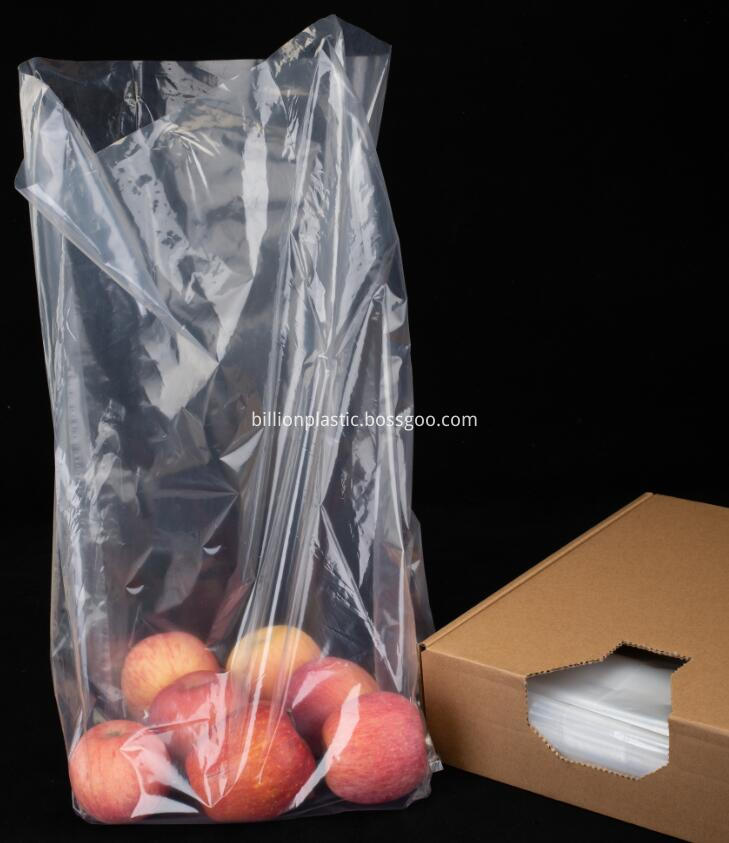Common inks for anti-counterfeiting packaging
Ink technology is a major aspect of printing technology in anti-counterfeiting packaging. The application of ink technology to anti-counterfeiting packaging is achieved by changing the formula of the ink or adding some special sensitive materials, such as photosensitive materials, heat-sensitive materials, and magnetic materials, to the ordinary ink. It is not easy to be copied, so it has anti-counterfeiting effect.
Commonly used inks for anti-counterfeiting packaging
1. Packaging requirements for printing inks
Generally speaking, substrates of different materials have different requirements for printing inks. The materials used in packaging are ever-changing, so there are n kinds of printing inks suitable for different packaging. However, some basic characteristics are necessary for various inks.
(1) The basic requirements of packaging for printing ink
â‘ Good liquidity. Ink with good fluidity is easy to transport and transfer when in use, without clogging the print head.
â‘¡After printing on the substrate, the ink should be able to dry quickly, with good adhesion and not easy to rub off, to ensure that the printed matter is clean and tidy.
â‘¢ The color of the printed matter should be correct, without fading or changing.
(2) The special requirements of packaging for printing ink
â‘ Diversified colors
A large part of the purpose of product packaging and decoration is for promotion. Therefore, the diversification of printing colors and bright colors are the basic requirements for packaging printing inks. Appropriate printing inks can print beautifully decorated packaging and cause consumers to Purchase interest.
The decoration of packaging prints is pretty. Most of the pigments used are organic compounds. These pigments are bright, but the durability is generally not very ideal. The prints are placed for a long time, and they often fade. This makes the packaged goods look a bit. Obsolete, so when choosing color inks for packaging, pay special attention to the use of pigments that are not suitable for fading to ensure the lasting and bright packaging decoration.
â‘¡Special process requirements
Different processes have different requirements for printing inks. For printing iron ink, if the printed packaging does not require high-temperature cooking and sterilization, then there is no need to consider the problem of high temperature resistance of ink. Ordinary ordinary ink can meet the process requirements. Otherwise, high temperature cooking resistance ink must be used to prevent In the process of food sterilization, the ink fades and some chemical reactions and physical changes affect the decoration effect of the product packaging.
â‘¢Special hygiene requirements
Hygienic requirements for printing inks are also an important aspect. For example, when printing plastic films for food packaging, the permeability of the printing ink must be considered to avoid food contamination.
â‘£Special drying requirements
Different materials have different ink drying properties. Materials such as ceramics, tinplate, plastic film, etc., because the surface is smooth and smooth, ordinary ink is not easy to stick, you need to use fast drying ink, such as ultraviolet drying ink, pulse radiation drying ink, etc.
There are many factors that affect the use of ink, and it is unrealistic to consider all of them. Therefore, only by focusing on the main factors, and through the proper selection of pigments, binders and additives, can the basic qualified printing ink be formulated.
2. Commonly used inks for anti-counterfeiting packaging
Printing inks for anti-counterfeiting packaging refers to the production of various anti-counterfeiting packaging inks by adding an appropriate amount of special substances to the preparation of printing inks in order to make the products after packaging and printing have certain anti-counterfeiting capabilities.
(1) Thermal ink
Also known as temperature indicating ink, its pigment can change color according to the change of temperature, showing different colors at different temperatures. There are many types of pigments that can exhibit heat-sensitive discoloration. Commonly used pigments include crystal structure change type, thermal decomposition type, and crystal transfer type.
At present, there are many types of thermal printing inks on the market, which can basically meet the requirements of thermal discoloration. However, the difference between different types of n is large. For example, the liquid crystal type ink has better color changing accuracy, the metal chromium salt type ink has strong light resistance, the fuel type printing ink has bright colors, and the packaging and decoration effect is better.
The key to packaging and printing thermal inks is how to allow consumers to identify the authenticity. Enterprises can formulate their own anti-counterfeiting secrets according to different formulas, but they should clearly tell consumers what color will appear at what temperature. For example, an enterprise uses thermal printing ink on the wine's trademark. After the trademark is heated, the word "Excellent" can appear, and the prompt of "Excellent when exposed to heat" is printed. However, this kind of prompt does not help consumers to distinguish between authenticity and fakeness. Instead, it provides criminals with the idea of ​​counterfeiting, because there are so many thermal inks that can achieve the effect of "exceeding heat", so it is easy to imitate counterfeiting. The manufacturer's secret anti-counterfeiting is useless. If the enterprise chooses the formula reasonably and prompts what color appears at what temperature and temperature, it will be difficult for counterfeiters to grasp the secrets of Western languages, and consumers will be able to easily distinguish the authenticity of the products, so that the packaging and printing thermal inks can effectively prevent counterfeiting effect.
(2) Magnetic ink
The pigments used in magnetic inks are magnetic materials. Commonly used are ferric oxide and ferric oxide. The former is brown and the latter is black. Both have relatively high residual magnetism. The binder is generally alkyd resin, and other pigments can be added to the magnetic ink to obtain inks of various colors.
The earliest magnetic ink was mainly used to print the code on the credit card. With the development and development of computers and computer reading and scanning systems, a variety of magnetic cards came into being, from magnetic tickets used by college students to shareholder cards in the stock market, from various shopping cards to post and telecommunication cards in the post and telecommunications system. Provides a broad field for the use of magnetic ink. Because magnetic cards have the characteristics of easy portability and quick settlement, they will be more widely used.
Magnetic ink is used for anti-counterfeiting packaging, which is mainly printed with magnetic ink on a certain part of the packaging, which can be detected by special means, thus forming a secret anti-counterfeiting.
Various magnetic cards are subject to the friction of the reading system during scanning and reading, and are also stored under the action of the electric field of the read-only system. Therefore, it is required to achieve sufficient ink layer thickness and density during printing.
(3) Fluorescent ink and phosphorescent ink
Fluorescent ink is made of fluorescent material dissolved in corresponding resin. The particles of fluorescent pigments are generally coarse, and there are many types of binders. Different binders will produce different fluorescence. When using fluorescent inks, ensure that they have sufficient concentration. The ink layer on the printed product should be thicker In order to ensure a satisfactory fluorescent effect.
The printed products printed with fluorescent ink are bright in color and have a good decoration effect. Under the action of visible light and ultraviolet light, they can emit shining fluorescence.
The fluorescent ink used for anti-counterfeiting packaging has the best anti-counterfeiting effect. Different formulas can get different fluorescent effects, and it is generally difficult to carry out realistic counterfeiting. The formula is in the hands of the enterprise, thus forming the anti-counterfeiting secret. Fluorescent inks have poor light resistance and are not effective for outdoor prints.
The characteristic of phosphorescent ink is that it can absorb the light incident on it and emit it at a certain wavelength within a certain period of time. Its pigment is zinc sulfide, and the binder is generally a neutral transparent substance, such as cyclohexanone resin. Mainly used for printing advertisements and signs. Mixing phosphorescent ink with fluorescent ink can get better anti-counterfeiting packaging effect.
(4) Anti-counterfeiting ink
Anti-counterfeiting ink, also known as insurance ink and security ink, is the earliest special ink used in the field of anti-counterfeiting. It is mainly designed to deal with the criminals who use bleaching spirit and other altered bills. It is used to print the shading of invoices and all securities. When the bleaching spirit and other chemicals are used, these shading disappear or change color. , So as to find traces of alteration.
The mechanism of anti-counterfeit ink fading has two main aspects, one is the use of pigments that can fade in case of fading spirit, such as some basic dyes, and the other is the use of linking materials that can change color in case of fading spirit or other chemical substances. Biphenol, etc. Both methods can get satisfactory results. Adding fluorescent materials to the anti-counterfeiting ink, the effect of anti-counterfeiting packaging will be better.
(5) Spray ink
Refers to ink for inkjet printing, suitable for spraying metal, plastic, glass and other materials. The pigments for spray inks are water-soluble dyes, and the main binders are polyester, polyether, chlorinated polyolefin, etc.
Inkjet printing is becoming more and more widely used in anti-counterfeiting packaging. Due to its fast printing speed and good quality, it is widely equipped on production lines for printing dates and other signs. Earlier inkjet printers have been basically solved due to the unstable quality of the spray ink used, which often clogs the nozzles and caused the production to stop. Therefore, it is required that the viscosity of the spray ink is appropriate and the fluidity is good to avoid clogging the nozzle.
Improving the formulation of spray ink, adding appropriate amount of fluorescent materials, magnetic materials, heat-sensitive materials, etc., will make the spray ink more anti-counterfeiting.
Flat Bag With Gusset is commonly used in Supermarket or Farmer's market for packing vegetables, fruits, meat, seafood or other foods. The material for our bags is food grade, to ensure our bags keep the food clean, fresh and hygienic. The bags could packed into the packing bags as a small unit or pack into the box for convenient draw out.


Flat Bag With Gusset
Ldpe Packing Bag,Ldpe Packaging Bag,Ldpe Fruit Bag,Vegetable Packaging Bag
BILLION PLASTIC MANUFACTURING CO.,LTD, JIANGMEN , https://www.billion-plastics.com